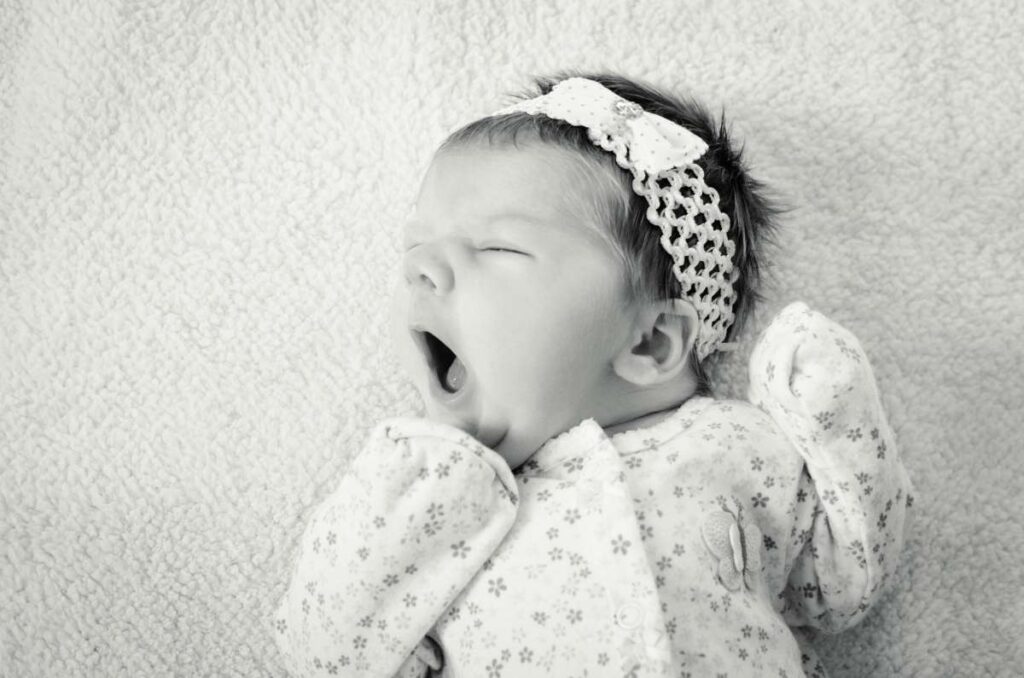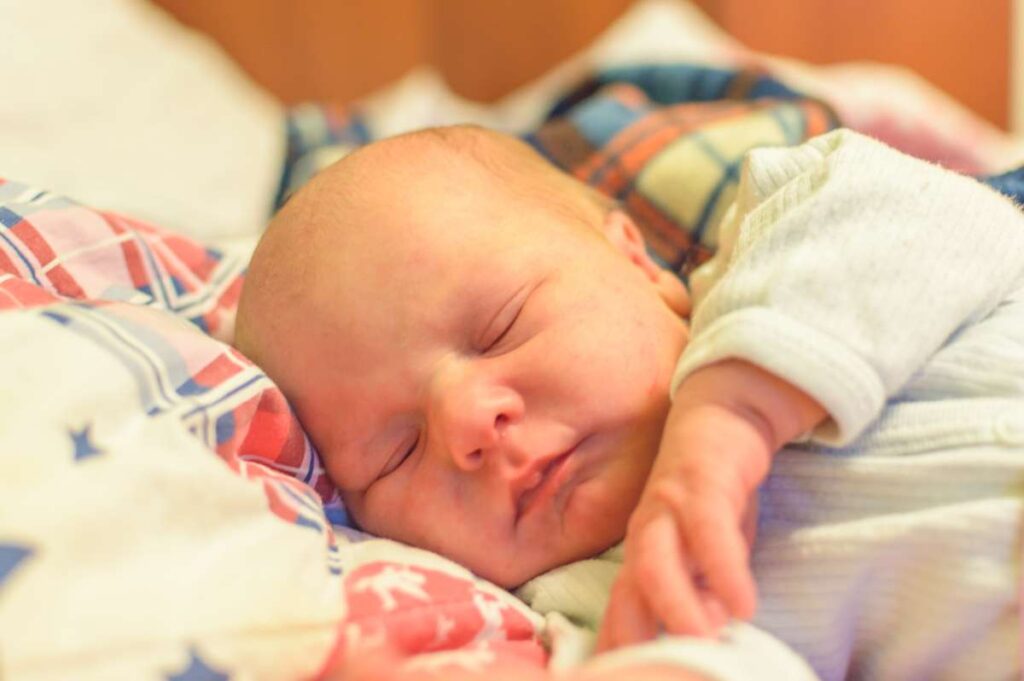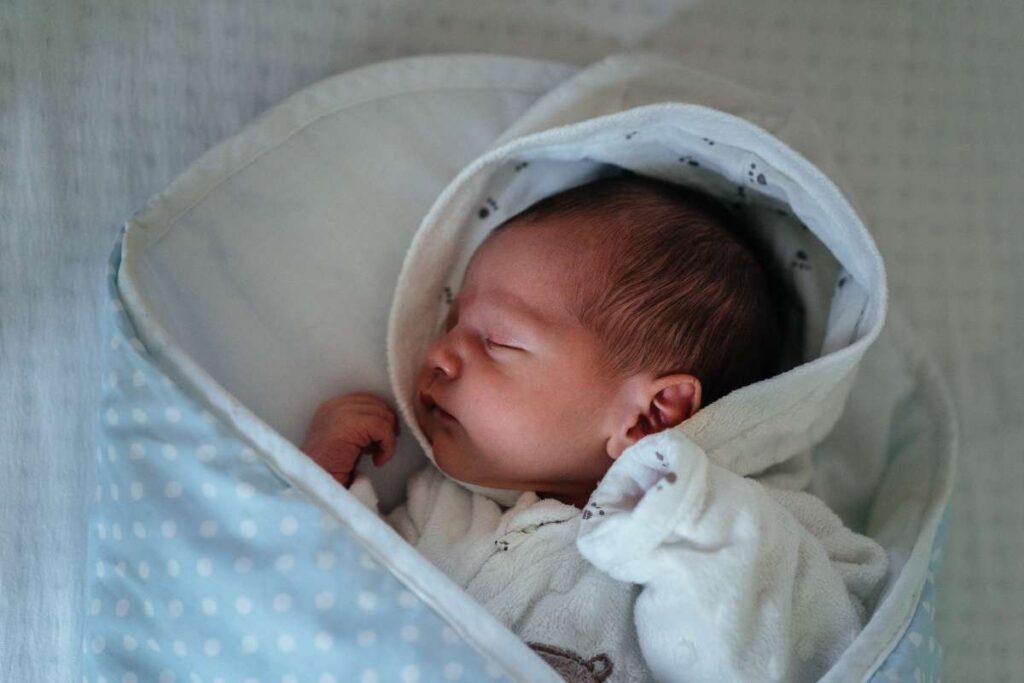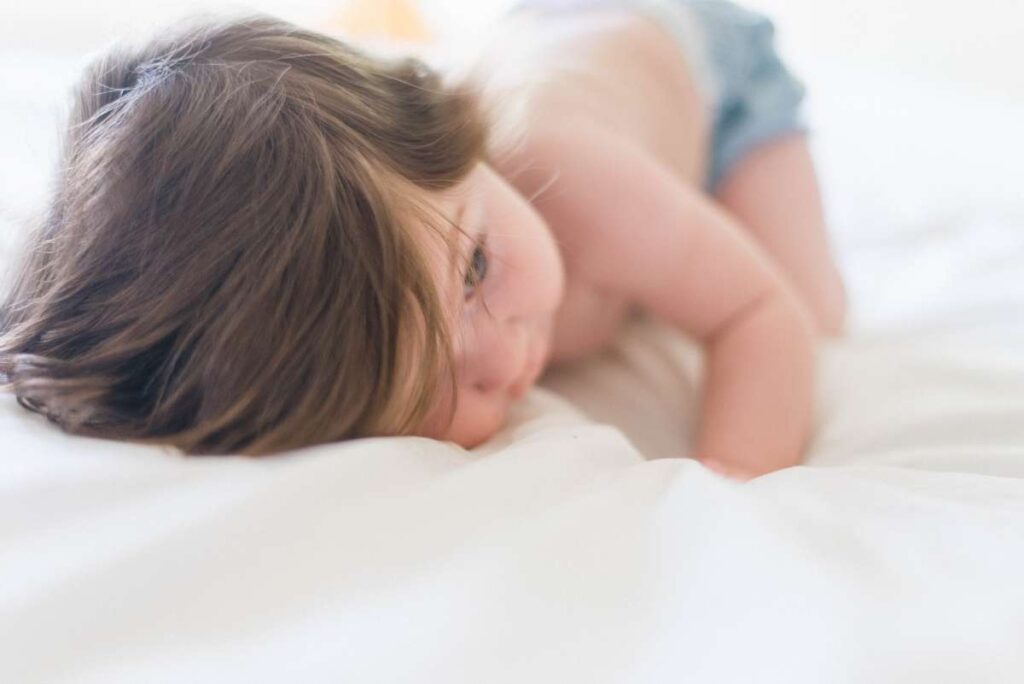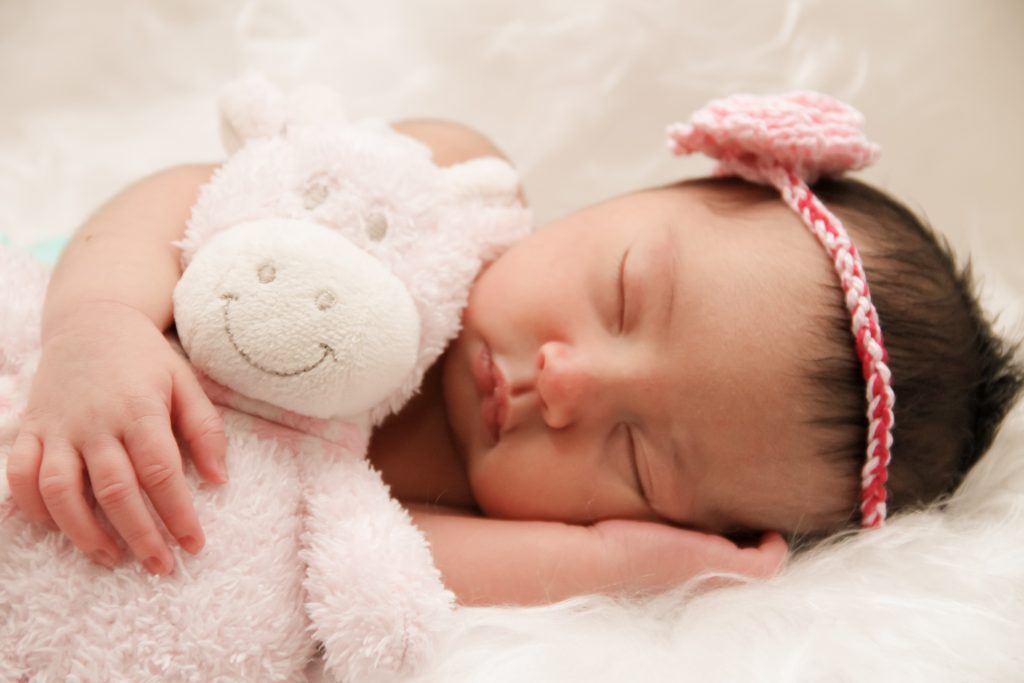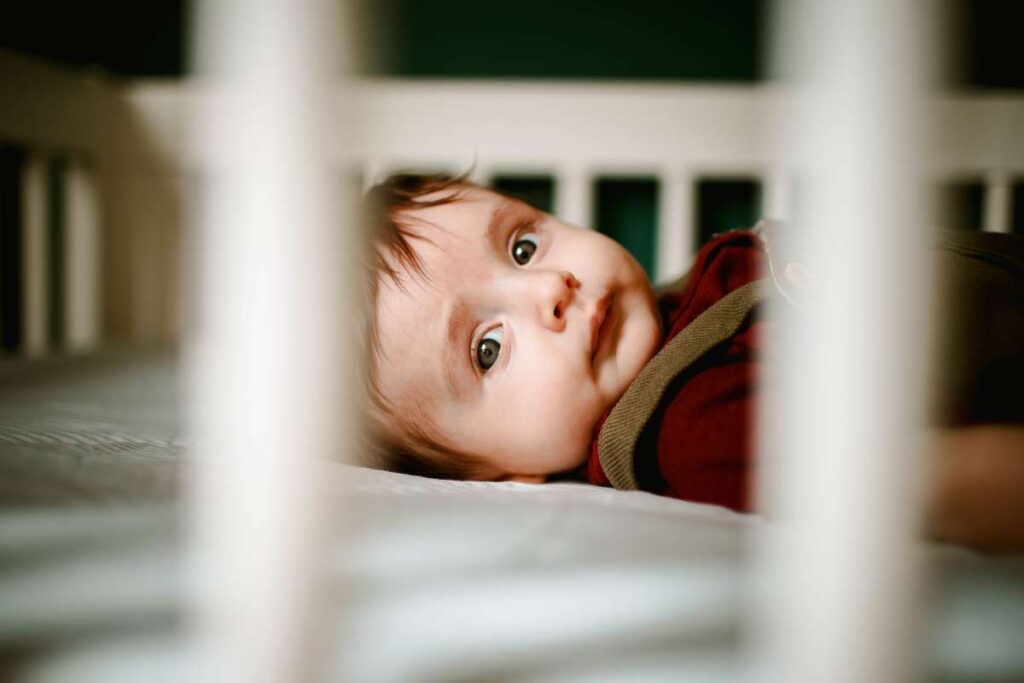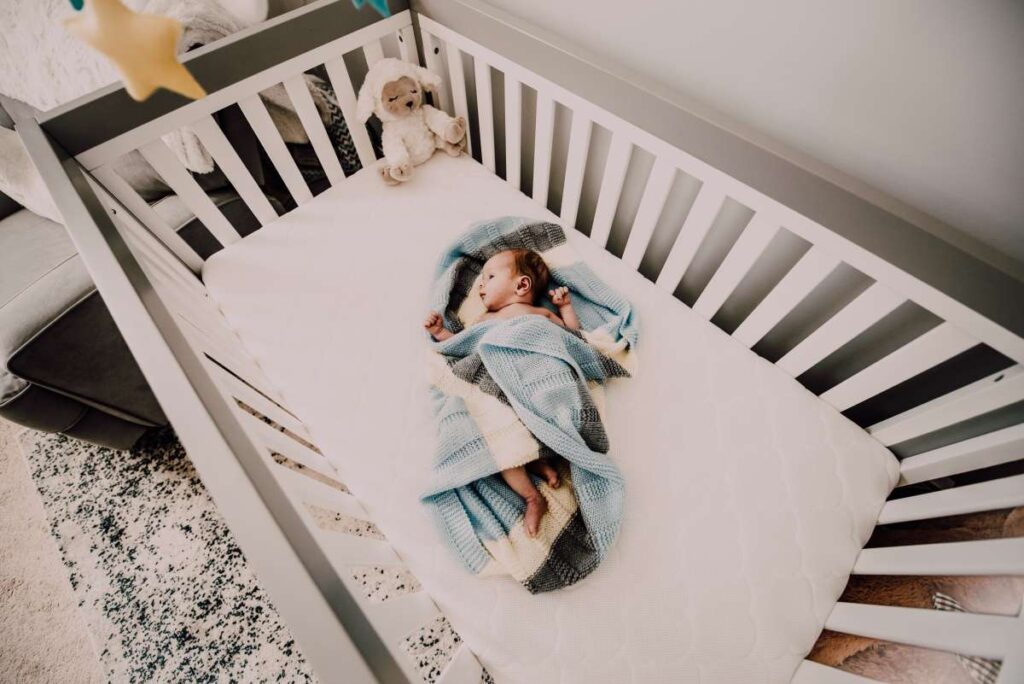Putting a baby to bed at night may be a stressful experience due to the uncertainty of whether he will be too hot or cold in his sleep attire. Since you shouldn't put your baby to sleep with a blanket, the one variable you have any say in is what they wear to bed.
What items should you add to your baby's wardrobe now that warmer weather is on the horizon so that they can continue to sleep soundly?
It's vital to think about the warmth of the baby's room before deciding what they should sleep in, whether they're in their own room or still sharing a room with mum and dad.
Keep the bedroom at a temperature of 68 to 72 degrees Fahrenheit during the summer.
She warns that if temperatures go below that mark, the infant may wake up more frequently. Above that temperature range, there is a much more significant problem. Babies are at a higher risk for sudden infant death syndrome (SIDS) if they become overheated, according to research.
Naturally, there will be times when it is impossible to maintain that precise temperature range in their space. You may have to add or remove layers if the baby's sleep environment is significantly colder or warmer than that.
The majority of baby monitors also include a temperature gauge, so you can check on the room temperature whenever you feel the need to.
Dress your infant in one extra layer than you would if you were going to be sleeping in same room.
Parents should know that a single onesie may be all that's needed to keep a baby cool on warm evenings in non-air conditioned rooms. Another layer may be necessary if indeed the room is air-conditioned.
This is a tough question to address, since there is no one "correct" method to outfit your child for sleep on hot summer nights.
Your baby's comfort, your home's environment, and your choice of air conditioning or fan are the primary factors to consider. The most crucial consideration is dressing them for the warmth of their room rather than the weather outside.
When you're getting your kid prepared for bed during summer nights, here are a few more things to think about:
Frequently Asked Questions About Baby
Lighten up on summer nights
On warm nights, keep it light and breezy — a basic short-sleeve cotton or organic-cotton bodysuit or T-shirt with a muslin or cotton swaddle or sleep sack layered on top is fine.
For instance, the swaddle, a parenting favourite that many babies wear until around 3-5 months of age, can still be worn on warmer nights. And the same goes for combinations of rompers, onesies, baby sleep sacks, and pyjamas, all technically fine for babies during summer.
When your child is still a newborn, you probably won't keep them out too long in warm weather. If you take them for a walk in the shade or for a car ride, they wear something to help them stay cool. Bodysuits and short-sleeved rompers are perfect choices.
Onesies are a must. Short-sleeves are definitely for the warm weather. Try to get one made of breathable cotton to avoid any synthetic fabric. If you know you'll be headed outside, try to get some clothes in lighter colours.
While you may be able to skip socks during summer, they're an essential layer during most months of the year. This is especially true during winter, when thick socks can prevent hypothermia and illness. When you and your baby leave the house in cold weather, always pack one or two extra pairs of socks in your diaper bag.
Summer Sleepwear For Your Baby
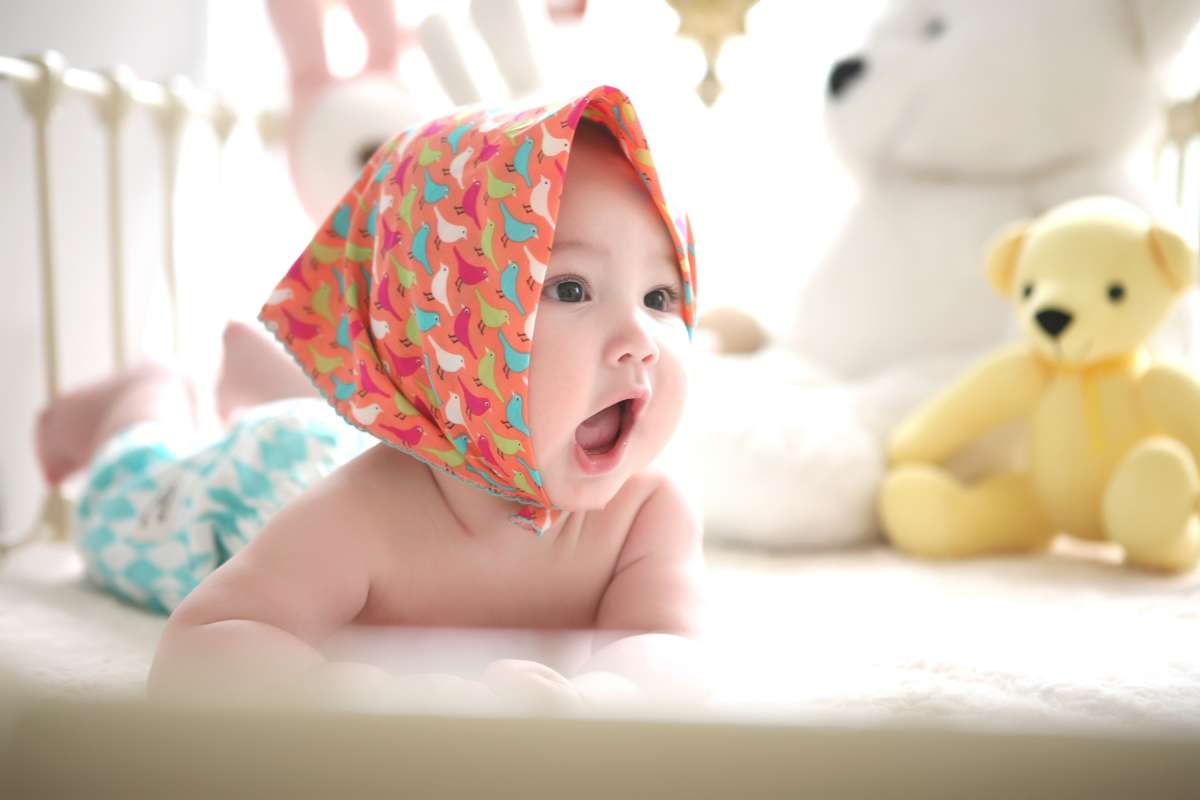
Although if your baby was born in the dead of winter, you should be taking advantage of the longer days and brighter sunshine that come with spring and summer. sure you found out how to dress your kid in cute summer clothes while keeping her comfortable in the cold weather.
To ensure a restful night, We imagine that you had the home at a nice, toasty temperature and that Baby wore warm pajamas. Now that summer is here, you may be wondering how to keeping her cool as she sleeps.
There is no one "correct" method to outfit a baby for slumber in the heat. The presence or absence of air conditioning, as well as your baby's preferences, will be determined by the local climate. However, here are some things to think about as you put your baby down for the night during the summer.
Dress The Baby In Light-Weight Summer Clothing.
The greatest approach to prevent your child from being too hot is to dress them in light, airy fabrics. Our entire collection is comprised of skin-friendly, all-natural ingredients.
Our sleepwear is made from a trademark fabric made from organic cotton and bamboo that is naturally breathable, thermoregulating, and moisture-wicking to maintain a comfortable temperature for your child all night long.
Clothes for newborn babies can be made from a wide range of materials. However, we now know better than to ever presume that children's clothing is created with safe and comfortable materials without first doing a thorough check.
When temperatures rise, it's especially crucial that you dress your infant in fabrics that will ease their discomfort rather than exacerbate it.
Cotton
When temperatures rise, cotton proves to be an excellent choice for clothing (and baby clothes). It's a great compromise: it's affordable and readily available while also being breathable, lightweight, and supple.
Keeping your baby comfortable when it's already difficult to get them to sweat is a top priority, and this fabric does a better job of letting heat escape than other options.
Linen
Another great fabric for the warmer months is linen. It's a fantastic, airy material that helps keep you comfortable even in the hottest conditions. Because of the open weave, it is also surprisingly lightweight. As a result of its tendency to wrinkle easily, linen is also more expensive than cotton and requires more care.
Rayon
You can find rayon in clothing and other goods made from cotton, pulpwood, and other natural and synthetic fibers. It mimics the look and feel of silk at a fraction of the price, which makes it a popular option for the warmer months.
If you want your rayon clothes to last, you should probably hand wash them or dry clean them.
Synthetics
Though some may choose to steer clear of synthetics altogether, there are advantages to using them for both kids and their parents. Synthetics may be engineered to last longer than natural fabrics, and they also have other advantages, such as the ability to stretch and dry quickly.
An added bonus of a cotton-polyester combination is reduced ironing frequency.
Make Use Of Light Layers.
Babies cannot control their body temperature, thus it is best to clothe them in one extra layer than you would normally wear at home. They should be fine sleeping in a lightweight sleeping bag over a relatively brief bodysuit or summer sleepsuit.
It's probably safe to go footless in your sleepwear or bodysuit on nights when the temperature is high. Adults, on the other hand, like to keep as much of their bodies covered as possible while sleeping (even if it's really warm outside), while infants don't seem to mind having little toes or legs exposed.
Little ones can easily get frostbite on their extremities, so keep that in mind if you use a fan or air conditioner in their bedroom. A lengthy sleepsuit or bodysuit helps protect a newborn from the cold since their circulatory system works to warm their chest first.
Baby, Resist The Urge To Overdress.
Do not bundle Baby up too much at night; doing so has been connected to sudden infant death syndrome.
Even during the summer, we tend to be on the chilly side, so figuring out what to put my newborn in was a constant source of stress for us. Don't try to make your kid feel as relaxed as you are.
A baby's cool extremities are not indicative of their core temperature. The strongest indicator is a look at the nape of the head or the stomach. You can tell Baby is overly warm if the skin on their neck or stomach is warm and sticky.
Your infant can wear any standard garment meant for a child of his or her age. The swaddle, for instance, is a popular method of swaddling babies and can be used until the baby is about 3 to 5 months old, even on warmer evenings. Combinations of bodysuits, onesies, baby sleep sack, and pajamas are also acceptable for babies to wear in the summer.
The key is to use lightweight, breathable fabrics. You can still use swaddles and other forms of clothing that may cause the baby's body temperature to rise over normal if you use thin blankets and sheets.
Furthermore, you need to shed any extra layers. When the weather outside is warmer, don't make your infant uncomfortable by having him or her wear too many clothing.
How To Dress A Newborn For Summer Sleep
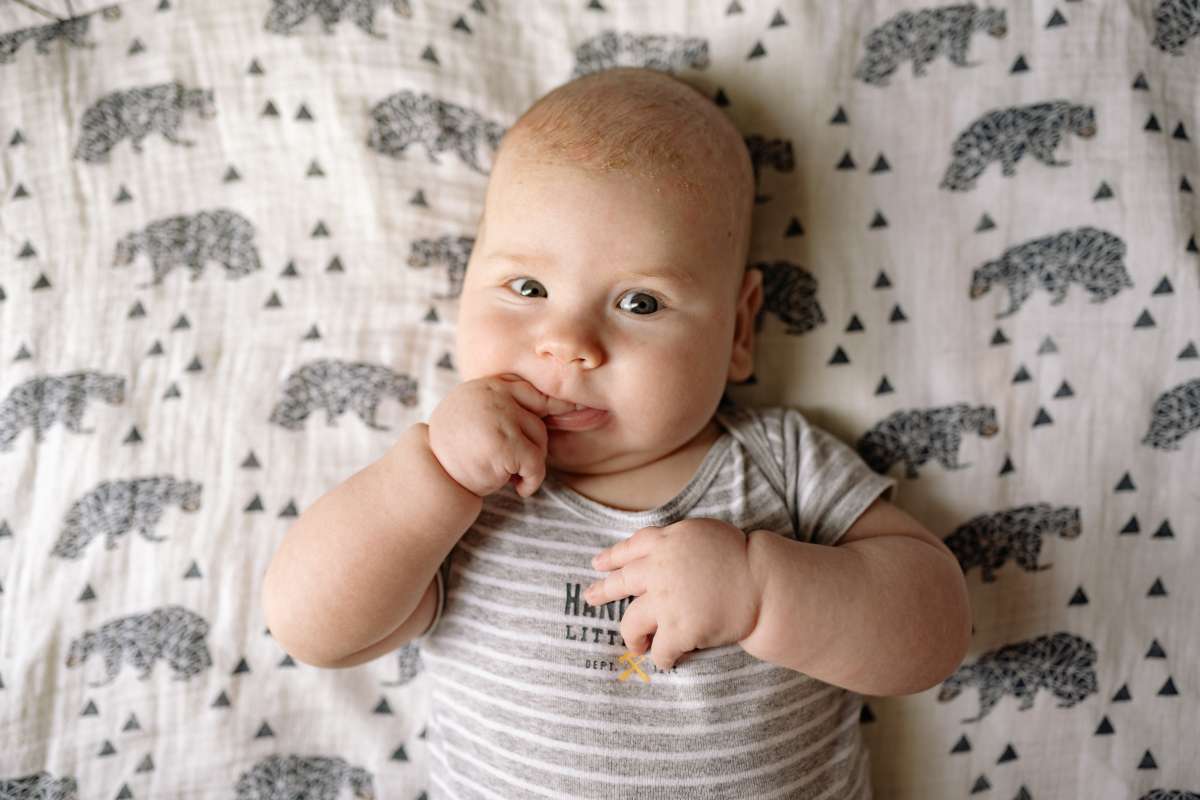
A new baby should never be exposed to frigid temperatures. Yet, you also don't want the infant to overheat from wearing too many layers. Since there's a correlation between extreme heat and the incidence of sudden infant death (SIDS), this should be something to pay close attention to.
These dangers may increase throughout the summer months. Lightweight clothing is best for a newborn, and you should avoid putting any extra blankets or pillows in its cradle. If you take special care to maintain a cool and pleasant environment for your infant, you may ensure his or her safe and restful sleep even during the warmer summer months.
Dressing Your Baby
Dress comfortably in lightweight, breathable fabric. Cotton or other lightweight textiles will help keep your infant comfortable and cool. Lighter textiles are preferable to wool or flannel. In general, short-sleeved onesies are acceptable summerwear.
Put your newborn in sleepwear made for that age group. Baby sleepwear is made using safe fabrics and follows strict standards for size and fit. Find summer sleepwear for newborns and put them in that at night and during naps.
Pick up outfits that will leave your newborn's face free of clothing. Don't put your baby to sleep with a hood, high collar, or anything else that could trap their face in a confined space. That manner, it can keep cool and breathe freely without overheating.
Don't put anything over the baby's head. The infant's head serves as its primary thermostat. The common practice of covering a newborn's head with a cap for warmth or protection can swiftly lead to overheating if the baby is laid down to sleep during the warmer summer months.
Put on a sleep sack instead of a blanket. A sheet in a newborn's crib poses a suffocation risk and is therefore not recommended by pediatricians. On the other hand, a sleepsack (wearable blanket) can be fastened securely all around baby with Velcro or snaps, eliminating this danger. If the infant starts to complain or feels too warm, you should take off the sleep sack.
Managing The Environment
Keep toys, blankets, and pillows out of the crib. Experts recommend that nothing should be in a newborn’s crib or bassinet other than a tightly fitting sheet over the mattress. Toys, blankets, pillows, and other objects can be suffocation hazards and cause a baby to overheat.
- Be sure to keep your baby away from your blankets if you co-sleep.
Adult-appropriate temperatures should be established. The room temperature for a sleeping infant does not need to be drastically different from that of an adult. A summertime infant should be comfortable sleeping in a room that is between 70 and 72 degrees Fahrenheit (approximately 21 and 22 degrees Celsius).
Get a fan going. The absence of air conditioning in the nursery or the necessity for supplemental cooling make box fans and oscillation fans good alternatives. Keep it far away from the cot or bassinet and make sure it isn't pointed directly at the baby's face.
- The room can also be cooled by hanging wet towels about the space.
Avoid exposing your newborn to direct sunlight. A infant may become overheated even in a moderately air-conditioned room if they are exposed to direct sunshine. Place the infant's cot or bassinet in a dark corner of the room, or close the curtains or blinds.
See if the baby is looking hot. A baby is overheated if they exhibit any of the following symptoms. If your infant shows one of the following symptoms, you should remove part of its clothing or relocate it to a cooler location:
- Sweat is forming on the infant's brow.
- You can feel the heat coming from its ears.
- The newborn's forehead has a noticeable crease.
- Combining fussiness with the aforementioned
Babies' Health Risks In Hot Weather
Infants have a more difficult time than adults do while trying to chill down. Even the smallest of infants may have trouble expressing their discomfort with the ambient temperature and the need for a change in their clothing or surroundings.
When the temperature outside rises above 80 degrees, many pediatricians advise keeping children indoors and out of the sun.
Heat Stroke
Babies can't effectively cool off their body because they don't start sweating until they are much older. A younger child or adult may not be able to handle the heat as well as an older one, and this might develop to heatstroke much more quickly. Warning indicators for heat exhaustion and heat stroke include:
- Increasing internal heat (above normal levels)
- Irritation, heat, and dryness of the skin
- Instinctive, rapid breathing
- Vomiting
- Confusion
- Sleep (not responding when handled or called) (not responding when touched or called)
A infant or young child who seems to be suffering from heatstroke or heat stroke should be taken to a cool environment and any unnecessary clothing should be taken off. Seek medical attention and try to provide the baby fluids (unless he or she is unconscious and cannot swallow).
Difficulty Waking Up
When infants are overheated, they often sleep too deeply. However, if your child has trouble waking up from sleep, this is actually a very serious problem and should be addressed immediately. It's not the first item that comes to mind when you ask, "What should a baby wear to sleep?" but it has been linked to an increased risk of sudden infant death syndrome (SIDS), so it's important to think about.
Dehydration
While infants may appear delighted to bask in the sun when you enjoy some fresh air in the yard or park, prolonged exposure to the sun can cause serious heat exhaustion. The result of this is a gradual loss of body fluids, which might eventually cause dehydration.
Try to spend as little time as possible in the direct sunlight, even though this may be difficult on beautiful summer days. Make sure they have enough of water and a sun cap at all times. Here are a few pointers on how to keep your infant well hydrated:
- Provide tiny amounts of breast milk or water frequently.
- Provide your baby with three balanced meals and two snacks daily.
- Don't consume anything with a lot of sugar in it, including milk, juice, soda, and energy drinks.
- When thirsty, an oral rehydration solutions (ORS) can help restore fluid and electrolyte balance.
Skin Irritation
Summertime heat and humidity can aggravate several skin disorders. Chronic skin illnesses like eczema may flare up in hot weather due to factors including increased perspiration, direct radiation from the sun, overheating, and dehydration.
Again, taking off excess clothing and keeping your child well-hydrated, cool, and out of the sun can assist.
Sunburn
When exposed to direct sunlight, the skin becomes red and inflamed, a condition known as sunburn. Pain from a burn can linger for several days after it first emerges, usually between two and four hours after exposure. It can be very harsh on your child's tender skin.
Sunburns can be avoided, especially if people use sun hats and other protective gear when out in the sun. Ironically, darker colors (which you'll want to avoid wearing in the summer) can be more effective in reflecting the sun's rays.
The simplest way is to stay out of the sun as much as possible and hide whenever feasible.
Is it time to start considering what a baby wear to sleep?" Keep in mind that if they get too toasty they may sleep too deeply and increase their risk of sudden infant death syndrome.
Conclusion
There is no "correct" method to get your kid ready for bed on humid summer nights. The most important thing is dressing them for their room rather than the weather. Overheating babies increases their SIDS risk. Likewise, there is no "correct" method to dress a hot baby for sleep. Air conditioning and your child's feeding schedule depending on local weather.
Cotton is wonderful for hot weather (and baby clothes). Synthetics are stretchy, dry quickly, and may last longer than natural textiles. Adults like to sleep with their legs and toes covered, unlike infants. It's crucial to remember that extreme heat increases SIDS cases. Keep your infant cool and comfortable to guarantee safe and quiet sleep-in summer.
Pediatricians recommend only a fitted sheet for a baby's crib or bassinet. Toys, blankets, and cushions can suffocate. These indications indicate overheating in a newborn. Remove extra layers and shift a baby or young child to a cool place if you're worried about heat exposure. Give the baby fluids at the hospital (unless they are unconscious and cannot swallow).
Remove heavy outerwear and keep your child cool, hydrated, and away from direct sunshine. Increased sweat, direct sunshine, warmth, and dehydration can worsen skin disorders like eczema in hot weather.
Content Summary
- Since you shouldn't put your baby to sleep with a blanket, the one variable you have any say in is what they wear to bed.
- What items should you add to your baby's wardrobe now that warmer weather is on the horizon so that they can continue to sleep soundly? It's vital to think about the warmth of the baby's room before deciding what they should sleep in, whether they're in their room or still sharing a room with mum and dad.
- Keep the bedroom at a temperature of 68 to 72 degrees Fahrenheit during the summer.
- According to research, babies are at a higher risk for sudden infant death syndrome (SIDS) if they become overheated.
- Dress your infant in one extra layer than you would if you were sleeping in the same room.
- Your baby's comfort, home environment, and choice of air conditioning or fan are the primary factors to consider.
- The most crucial consideration is dressing them for the warmth of their room rather than the weather outside.
- Sure, you learned how to dress your kid in cute summer clothes while keeping her comfortable in the cold weather.
- There is no "correct" method to outfit a baby for slumber in the heat.
- The local climate will determine the presence or absence of air conditioning and your baby's preferences.
- However, here are some things to think about as you put your baby down for the night during the summer.
- The greatest approach to prevent your child from being too hot is to dress them in light, airy fabrics.
- Cotton is an excellent choice for clothing (and baby clothes) when temperatures rise.
- If you want your rayon clothes to last, you should hand wash them or dry clean them.
- Going footless in your sleepwear or bodysuit is safe on nights when the temperature is high.
- Do not bundle your Baby up too much at night; doing so has been connected to sudden infant death syndrome.
- Don't try to make your kid feel as relaxed as you are.
- A baby's cool extremities are not indicative of its core temperature.
- You can still use swaddles and other forms of clothing that may cause the baby's body temperature to rise over normal if you use thin blankets and sheets.
- When the weather outside is warmer, don't make your infant uncomfortable by having them wear too much clothing.
- Lightweight clothing is best for a newborn, and you should avoid putting extra blankets or pillows in its cradle.
- Dress comfortably in lightweight, breathable fabric.
- Cotton or other lightweight textiles will help keep your infant comfortable and cool.
- Put your newborn in sleepwear made for that age group.
- Pick up outfits that will leave your newborn's face free of clothing.
- The infant's head serves as its primary thermostat.
- Experts recommend that nothing be in a newborn's crib or bassinet other than a tightly fitting sheet over the mattress.
- Toys, blankets, pillows, and other objects can be suffocation hazards and cause a baby to overheat.
- Be sure to keep your baby away from your blankets if you co-sleep.
- Adult-appropriate temperatures should be established.
- Avoid exposing your newborn to direct sunlight.
- An infant may become overheated even in a moderately air-conditioned room if exposed to direct sunshine.
- Place the infant's cot or bassinet in a dark corner of the room or close the curtains or blinds.
- A baby is overheated if they exhibit any of the following symptoms.
- An infant or young child who seems to be suffering from heatstroke or heatstroke should be taken to a cool environment, and any unnecessary clothing should be removed.
- Seek medical attention and try to provide the baby fluids (unless they are unconscious and cannot swallow).
- Difficulty Waking Up When infants are overheated, they often sleep too deeply.
- However, if your child has trouble waking up from sleep, this is a serious problem and should be addressed immediately.
- But it has been linked to an increased risk of sudden infant death syndrome (SIDS), so it's important to consider.
- While infants may appear delighted to bask in the sun when they enjoy some fresh air in the yard or park, prolonged exposure to the sun can cause serious heat exhaustion.
- Try to spend as little time as possible in direct sunlight, even though this may be difficult on beautiful summer days.
- Make sure they have enough water and a sun cap at all times.
- Here are a few pointers on keeping your infant well hydrated: Provide tiny amounts of breast milk or water frequently.
- Provide your baby with three balanced meals and two snacks daily.
- Summertime heat and humidity can aggravate several skin disorders.
- Chronic skin illnesses like eczema may flare up in hot weather due to increased perspiration, direct radiation from the sun, overheating, and dehydration.
- Again, taking off excess clothing and keeping your child well-hydrated, cool, and out of the sun can assist.
- The skin becomes red and inflamed when exposed to direct sunlight, which is known as sunburn.
- It can be very harsh on your child's tender skin.
- Sunburns can be avoided, especially if people use sun hats and other protective gear when out in the sun.
- Ironically, darker colours (which you'll want to avoid wearing in the summer) can effectively reflect the sun's rays.
- The simplest way is to stay out of the sun as much as possible and hide whenever feasible.
